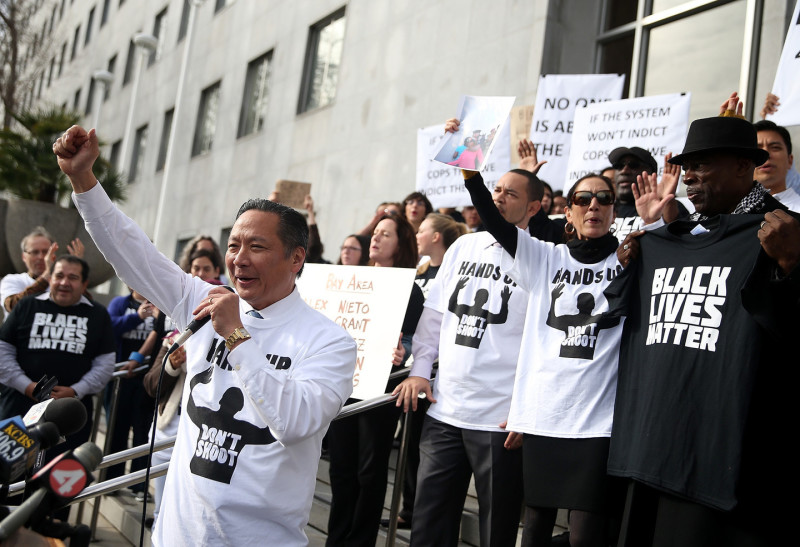“I have it, everyone has it,” Adachi said. “Part of becoming better human beings is recognizing that bias.”
Adachi said his own office had instituted implicit bias trainings to help attorneys recognize their own preconceived notions when representing clients. He said he’d like to see the San Francisco Police Department implement similar trainings for its officers.
“There’s a test, called the Implicit Association Test, where they can actually measure human bias,” Adachi explained. “They have you look at images that flash on the screen very quickly, and you use your computer keyboard to make certain choices: Good, bad, positive or negative. And what it shows is that most people are going to make judgment calls against African-Americans and in favor of white Americans.”
Joining Adachi at the Public Defenders for Racial Justice conference was Alameda County Public Defender Brendon Woods, who said he was motivated by personal experience to practice law.
“I have family members that have been incarcerated and gone through the system, uncles in prison, cousins have been in the system,” Woods explained. “I just knew that if I was going to get through high school, college, law school, I was going to be a public defender. I wanted to be able to advocate for people who’ve not had anyone there to advocate for them before.”
Woods said a nationwide movement drawing attention to racial inequality in the wake of high-profile shootings of unarmed African-American men has set the stage for public defenders to bring these issues to the attention of attorneys and judges.
The numbers in his own backyard illustrate the problem, Woods added.
“For example, Alameda County is 12 percent African-American. We have Santa Rita jail -- it’s the third-largest jail in California, the fifth largest jail in the nation. It holds about 4,000 people -- and it’s 54 percent African-American,” he said. “If you just look at the sheer numbers, you see the inequality. Just the sheer numbers of black and brown faces that are incarcerated and prosecuted. It’s astonishing.”
The public defenders have been particularly focused on judges' decisions on pretrial detention.
“People’s initial custody status … impacts every single decision they make from that point forward,” Jane Brown, assistant public defender of Alameda County, said in an interview on the day of the conference.
“So even if they are not guilty of a crime, the fact that they’re locked up behind bars and have to await trial -- for possibly two months even -- may make them take a resolution or a deal that they wouldn’t have otherwise,” she explained. “One of the things we can do to remedy that is to educate and advocate on behalf of our clients … to get both the court and the district attorney to understand that this is a racial injustice, just the fact that this person is being kept behind bars awaiting trial.”
She added that the same issue could also be raised with regard to charging decisions, jury selection and sentencing. “Every single person that walks in the courtroom, from attorneys to deputies to judges to district attorneys, is operating with implicit bias,” she said.
Yet Public Defenders for Racial Justice may face an uphill slog when it comes to persuading other areas of the criminal justice system to take implicit bias seriously -- particularly when it comes to policing.
A report released recently by the W. Haywood Burns institute, commissioned by the San Francisco Reentry Council, revealed wide racial disparities in San Francisco’s criminal justice system. Among other things, the report showed African-Americans were seven times as likely as their white counterparts to face arrest.
Yet when asked to respond to that report in an interview with KQED, San Francisco Police Chief Greg Suhr said he believes it “only tells part of the story.”
Suhr defended his officers’ work, saying, “We’re in the neighborhoods where people are asking us to be, looking for the people that the people are asking us to look for. … So this isn’t like the officers leave the station and just talk to anybody. He added, “Because crime is local to many neighborhoods, a lot of the people describing the criminals are of the same race, gender, sexual orientation as the suspects they are describing.”
Reached by phone, spokesman Albie Esparza noted that the SFPD addresses biased policing in its departmental regulations, and integrates cultural competency instruction into police academy training. But he did not know of any plans to conduct implicit bias training.
Bryan Goebel contributed to this report.
